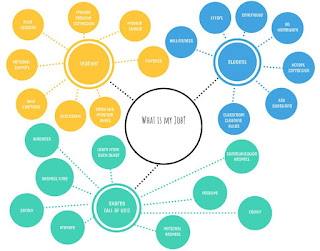TESL 0160: Assignment #2 - Job Analysis
Most people have wondered what they want to be when they grow up. I sometimes still wonder what do I want to be when I am finished being what I have to be! As part of this assignment we were tasked with exploring options for teaching ESL in a context that appeals to us. I chose a local context and one that is important to me. Included in this blog post are two parts of this assignment.
Part 1 is a video file/screencast with a presentation that outlines the research I did for this context.
Part 2 is an activity that I had recorded on my blog early in my TESL journey that I have added to and modified and believe that I could use in my chosen context.
Feel free to leave comments or contact me if you would like to discuss my thoughts and ideas!
Part 1:
Part 2:
Part 1 is a video file/screencast with a presentation that outlines the research I did for this context.
Part 2 is an activity that I had recorded on my blog early in my TESL journey that I have added to and modified and believe that I could use in my chosen context.
Feel free to leave comments or contact me if you would like to discuss my thoughts and ideas!
Part 1:
Part 2:
TESL 0160 –
Assignment #2 – Part 2 – Activity Modification
General
Comments:
The following activity is
one that I posted on my blog early on in my TESL program engagement. The activity comes from ongoing experiences
in facilitating workshops with various demographics of people.
You can find the original
activity listed as Introduction Activity #2 on my blog at: https://danalbergman.blogspot.com/p/activities.html
Introduction
Activity - Original
An introduction activity
that I would consider at the beginning of a new class is a session around “What
is important to me?” When we can identify the things that are important to us
and understand that we have at least some shared values, we are generally more
willing to be engaged and less likely to be engaged in the “fight or flight”
reactions. I've engaged in this activity in other workshops that I conduct and
almost without fail people share the values of safety and health, financial
well-being, happiness, family and friends, good productive work to do, respect,
caring, the sanctity of faith or religion, integrity. When you can identify
shared values, you can refer to those throughout your class times. You can use
these values in order to develop and create a safe classroom for your learners
(and yourself), and you can use these as launching pads for discussion around a
host of ideas or themes. If you can find a way to come up with a collective
value statement, poster, or some other way of showing this, you also have a
visual reminder from class to class that reinforces this for your learners and
anyone who happens to visit your class.
Introduction
Activity – Modified
Rather than having only a
discussion, ask students to bring something to class (that they are willing to share)
that represents what they value (a picture of family, a head covering, a
necklace, a book, etc). Using realia in
class to demonstrate personal values will be more engaging than just having a
discussion. It will also provide an
opportunity for the learners to engage in more speaking skill practice as they
describe the item they brought, and the meaning it has for them. A discussion can still be part of the
activity, but with this option, you can either spend more time in a class, or
spread it out over several classes.
Rationale For
Changes
I like this activity and I
still believe that it could be used as is, but at the time that I included it
in my blog, I did not know about using “realia” in activity/lesson development.
While using learner-supplied tangible items in class to demonstrate concepts is
not always possible in a short workshop, it is possible in classes. Learners (of all ages) want their learning to
be relevant. They want to know why this
should matter, and when we can create an environment where we are building a
broader understanding of the values we hold dear, we are also building
awareness, empathy, commonality, and community.
If we can create an environment where the learners know that their
values are respected, they become more comfortable and engage more freely in
the learning opportunities as well. If
we think about Maslow’s hierarchy of needs, then we remember that outside of
food and shelter, safety is a basic need.
If we have those, then we can start to think about learning. Many newcomers, whether economic immigrants
or asylum seekers need a sense of safety in their learning environment before
they have the ability to develop learning behaviours.
Goals of the activity
(outside CLB outcomes of speaking/presentation) are to understand that we share
common values, to build empathy, and to create safety in the classroom with who
we are, so learners have the capacity to learn.
I believe that this exercise is a good exercise to do with a new class –
maybe not in the first class or two, but perhaps after a short period of time.
Dana Bergman

Comments
Post a Comment